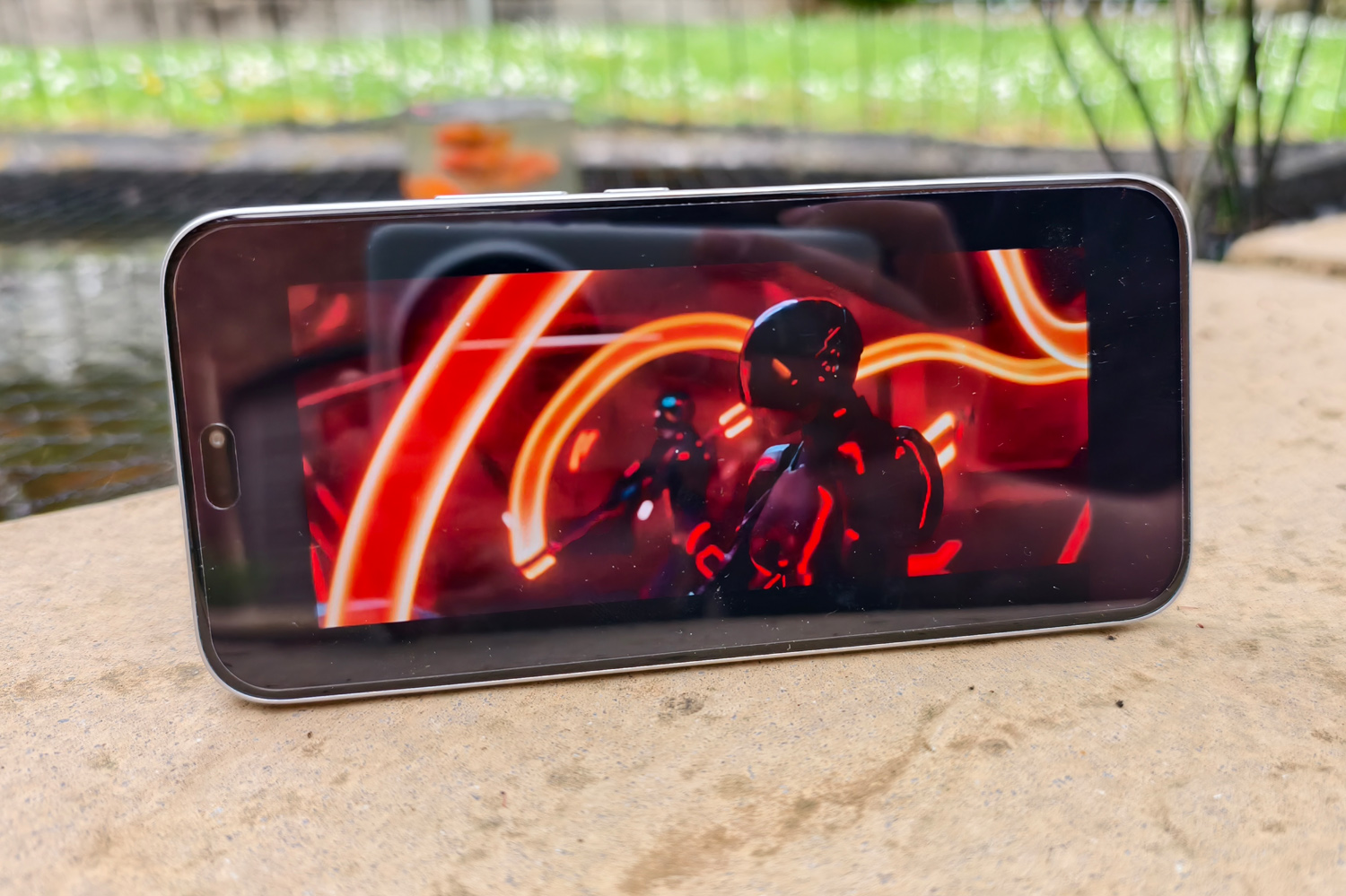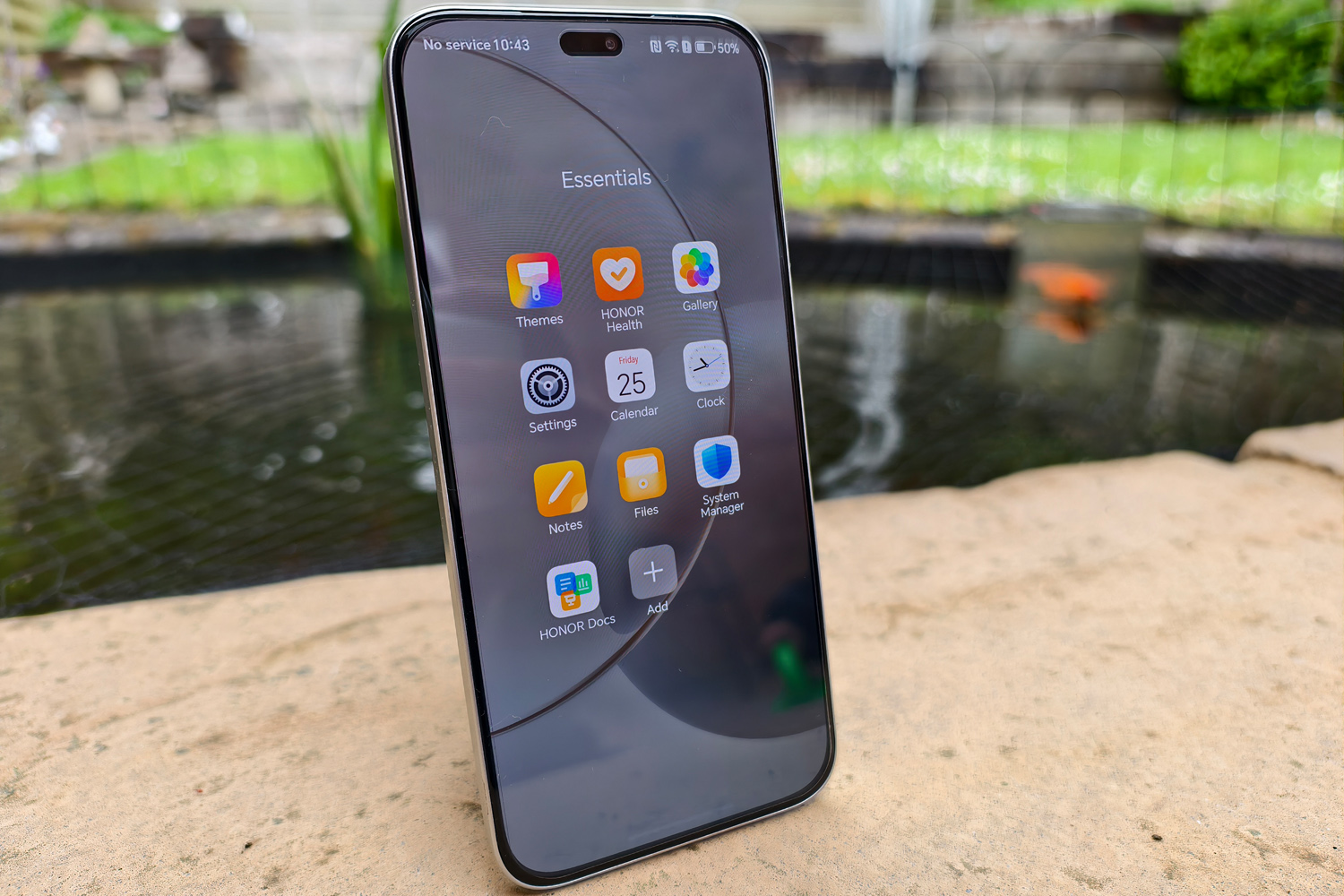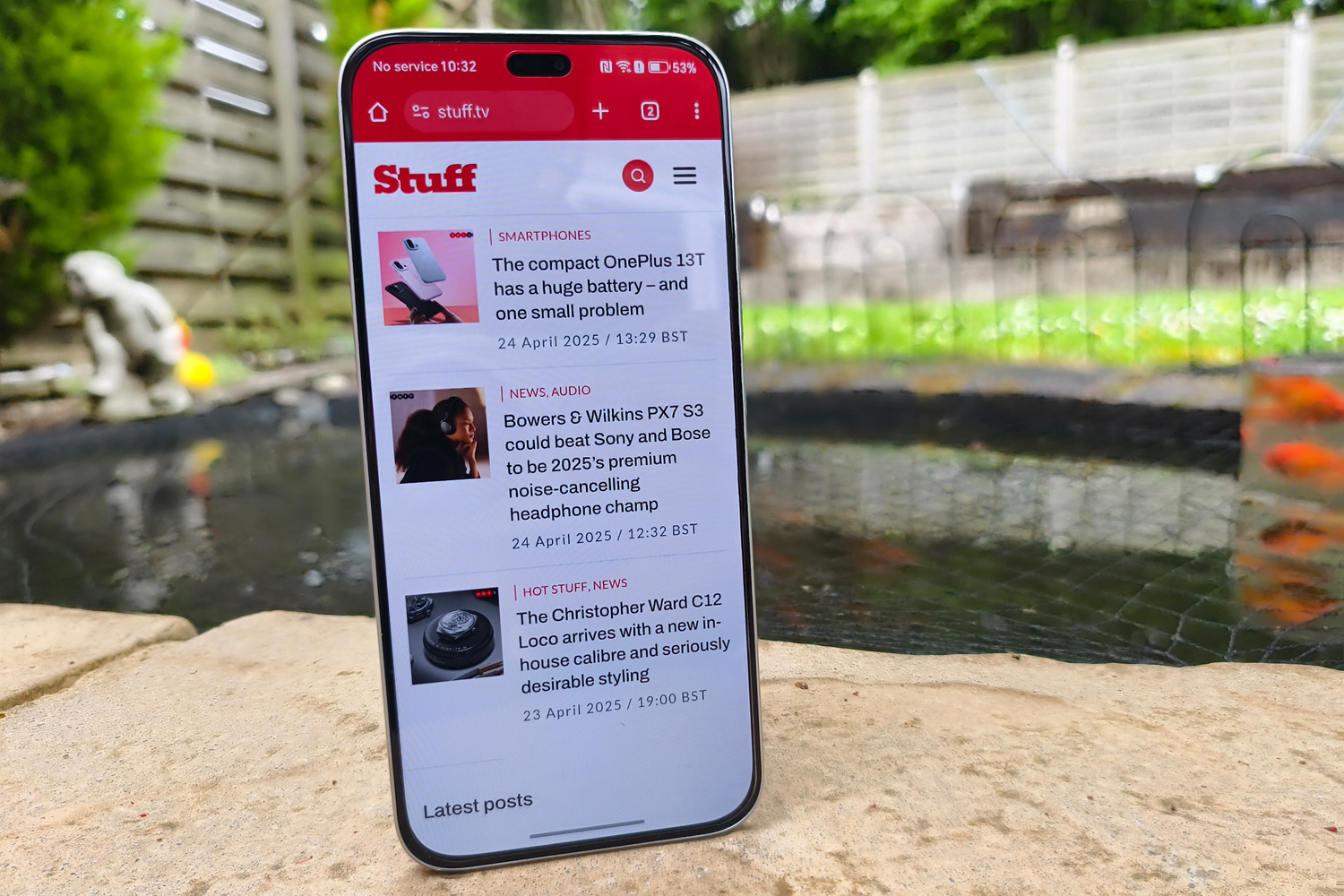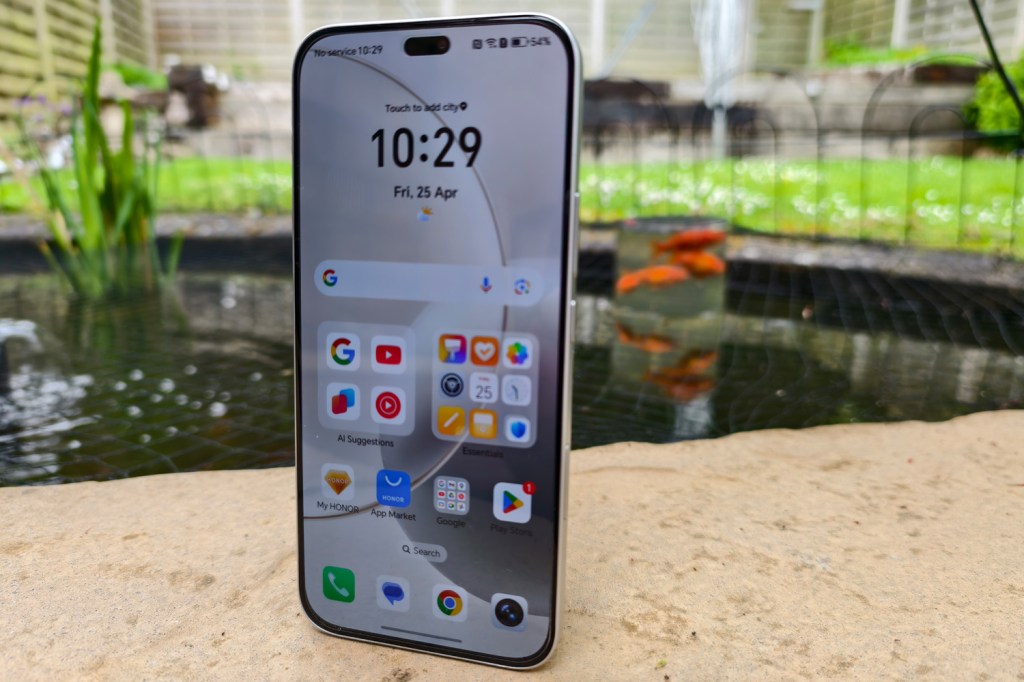Introduction
Where Apple treads, others tend to follow. With the 400 Lite, Honor is following about as closely as it can – yet this sharp-looking Android costs less than a third of the price of its iOS inspiration. It’s the first affordable phone with a customisable camera button, which controls a rear lens duo headlined by a 108MP snapper. That’s an impressive pixel count, regardless of price.
This is still a budget phone at heart, of course. At £250/€299 (sorry America, Honor still won’t sell to you directly) it costs half as much as a Google Pixel 9a, and the rest of the spec sheet reflects that. The cut-price competition has also really hotted up lately; the Poco X7 Pro proved slim dimensions don’t have to come at the expense of battery capacity, and the upcoming CMF Phone 2 has very much gone its own way on the design front. Can the 400 Lite do more than just a convincing impression of an iPhone and earn a place in your pocket?
Design & build: sincerest form of flattery?
There’s no escaping it: the Honor 400 Lite is the spitting image of an iPhone 16 Pro. I’m not saying Apple has the monopoly on flat sided rectangles, but once you factor in the Dynamic Island-mimicking selfie camera cutout and rear camera module it’s a dead ringer. Especially in the Velvet Grey of my review unit, which looks very metal-like from a distance.
You won’t find any titanium here, of course; the whole thing is made from polycarbonate. Only two of those rear lenses actually have sensors behind them (the third contains the flash), and the facial recognition isn’t secure enough for your banking apps. But what did you expect for the cash?
Honor has fully committed to the bit with the touch-sensitive AI Camera button, which sits in the exact same spot as the iPhone 16’s Camera Control. Which means it’s too far up the side to reach comfortably when holding the phone in landscape.
It feels as well-built as the budget competition, is satisfyingly thin at just 7.3mm, and lightweight without feeling toy-like at 171g. The flat sides make it easy to grip and the screen bezels are some of the skinniest I’ve seen at this price. IP64 dust and water resistance is merely OK, though, with some rivals now managing IP68 protection.
The under-display fingerprint sensor sits a little too close to the bottom edge for my liking, making one-handed unlocking a little tricky, but it was as fast and accurate to recognise my prints as any other sub-£300 phone.
Screen & sound: shine on

OLED screens are even a given on affordable phones these days, and the Honor 400 Lite doesn’t disappoint. Its 6.7in panel fills the entire front of the phone, with skinny, symmetrical bezels that curve neatly at all four corners. It looks like a much pricier device as a result. The 2312×1080 resolution looks sharp at arms’ length and I like the vibrant colours.
You get a 60-120Hz dynamic refresh rate here, a welcome improvement from the Honor 200 Lite’s 90Hz maximum. There’s an option to force 120Hz on all the time for the smoothest scrolling, but the phone was quick enough to react to my inputs that I was happy to leave it on the automatic setting.
Contrast is great, as you’d expect given the tech, as are black levels. The dark and moody Tron: Ares trailer had an impressive amount of depth, with HDR support making each Light Cycle’s light trail really pop. It helps that viewing angles are top notch within its price bracket, and the screen can get plenty bright when you need it to.
A peak 3500 nits isn’t quite as high as Honor’s similarly priced Magic 7 Lite, but it meant I could use the phone outside without having to squint when the sun came out. rapid 3840Hz PWM dimming and a Circadian Night setting that strips away unwanted blue light protect your eyes at night, too.
Audio is a step behind the visuals, on account of only having a mono speaker. It’s a big clue this is a budget phone. There’s enough volume for podcasts and YouTube clips, but you’ll want headphones for anything with even a tiny amount of bass.
Cameras: beat the count
Honor has gradually been turning its back on macro shooters, which in my mind is a good thing given they add such little value to a phone. So while the 400 Lite has one less lens than the outgoing 200 Lite, it keeps the two important ones. OK, the 5MP ultrawide very much gives the game away that this is a budget device, but the 108MP lead lens should balance things out. Pixel count isn’t everything, of course, and it lacks optical image stabilisation, so will be a step behind the Magic 7 Lite for low-light precision.
That phone doesn’t have the 400 Lite’s AI Camera button, though. Press it at any time and you’re taken straight into the camera app, while a press and hold wakes up Google Lens for visual searches. Once in the camera app, a half-press will lock focus, a press-and-hold starts recording a video, and swiping left and right controls the zoom level. So far, so iPhone, but there’s no way to change the function to control depth blur or exposure.
You can’t set it to toggle between lenses rather than zoom levels – no surprise given you have just two to choose from here. That meant I used digital zoom (which crops the sensor to maintain detail levels) quite a bit during testing. Unfortunately the lack of OIS and some aggressive noise reduction/smoothing algorithms meant a lot of the detail ended up crushed out of my shots. As with the Magic 7 Lite, 3x shots seemed to hold up better than 2x ones, preserving that little bit more clarity.


When given the whole sensor to play with, images looked clean and colourful for an affordable phone., Dynamic range is alright for most scenes and the finer details are maintained. In good light colours have plenty of pop, and the highlights capture mode made getting crisp shots of subjects that refuse to sit still that little bit easier.
It’s not as good a low light performer, with noise creeping in and needing a steady hand for crisp shots. Dynamic range also takes a hit, and HDR processing can’t rescue the more intense highlights.
The ultrawide lens can pack a good amount of a scene into the frame, but that low pixel count is pretty blatant when comparing with the lead camera. There’s not much in the way of fine detail, noise is present even during the day, and dynamic range was that bit narrower. It’s still a more useful inclusion than a macro shooter, but other budget phones do better.
As much as the AI Camera button and iPhone-aping camera arrangement implies this should be a phone for photographers on a budget, it can’t deliver the goods to the same level as other sub-£300 phones – and spending just a little more gets considerably better results.
Software experience: Lite on AI

Honor’s take on Android 15 is a known commodity at this point. MagicOS 9 isn’t a grand departure from previous versions, so the visual similarities to iOS aren’t a shock. Quick settings and notifications live in separate pull-down menus, there’s no app drawer as standard, and you’ll spot the extensive selection of own-brand apps before you see Google’s defaults hidden away in a folder.
Other Apple-esque features include Magic Capsule, a sort of cut-down Dynamic Island. Music controls appear here, along with call timers and alarms, but that’s your lot. It’s not the first time I’ve seen it on a budget Honor phone, and its functionality hasn’t expanded at all, but it works well enough.
Magic Portal is an Honor original, putting context sensitive actions onscreen when you drag an image or text selection to the floating sidebar. It’s handy for jumping between apps, as it puts the most relevant one at the top of the list – maps if you’ve highlighted an address, for example.
Unsurprisingly for an affordable phone, the 400 Lite has a fair few pre-installed apps from third-parties. I’ve seen worse offenders, and they can be scrubbed from the onboard storage easily enough, but it’s a firm reminder you’re using a budget handset. The 256GB capacity means you’re hardly hurting for space, at least.
Honor might’ve recently committed to seven years of update support for its flagship phones, but that doesn’t appear to have filtered down to its more affordable models yet. It’s unclear exactly how many new Android versions the 400 Lite will get, but I’d bank on it being just a few. If long-term ownership is the goal, it might make more sense to save some more cash and check out something from the Apple or Google camps.
Performance & battery life: no speed demon

With power coming from a MediaTek Dimensity 7025 chipset, the Honor 400 Lite is a modest performer. This is budget silicon, with enough oomph to run Android at a fair lick but landing at the bottom end of most benchmark leaderboards. Geekbench single- and multi-core scores of 951 and 2284 put it very close to the Magic 7 Lite and its Snapdragon 6 Gen 1 CPU, which is several years old at this point.
Android’s animations were smooth for the most part, and apps opened quickly enough, but I noticed they would reload or refresh a little more often here when multitasking than a Nothing Phone 3a. It won’t bother you when sticking to the basics like social media, web browsing and video streaming, but more demanding creative apps might feel sluggish. If you’re coming from a higher-end phone, you’ll feel the speed difference, though it’s not a total dealbreaker.
This isn’t a top choice for mobile gamers, either. 3Dmark test scores again see it outperformed by similarly-priced rivals, and many of the games I tried from the Play Store defaulted to lower graphics settings. 2D titles and simpler games run well enough, and with some of the visual niceties switched off you can play 3D fare too – just not as well as a pricier device.
MediaTek knows a thing or two about efficiency, though, and the Honor 400 Lite’s 5230mAh battery is a competitive capacity. Sure, it’s less than you’ll get from the Magic 7 Lite or Poco X7 Pro, but there’s easily enough juice here for a day and a half of more relaxed use. Heavy gaming and video recording will drain it faster, but I never struggled to see out an entire day on a single charge.
Honor can usually be relied on for rapid wired charging speeds, so the 400 Lite’s 35W refuelling feels a little modest – especially when rivals manage 90W for similar money. Wireless charging doesn’t make the grade, either, though that’s less of a surprise.
Honor 400 Lite verdict

If the Honor 400 Lite looked any different, it’d be lost in the shuffle. As affordable phones go it’s an alright performer, takes a decent enough photo, and can go all day on a charge – but the same can be said for most of its rivals. The top contenders also excel in one or more areas.
The Poco X7 Pro lasts even longer and has more power; the Nothing Phone 3a has unique looks and streamlined software; the Motorola Edge 60 Fusion is way tougher. Honor’s own Magic 7 Lite remains the longevity champ, and you won’t mistake it for an iPhone.
But maybe that’s exactly what you want? None of the cheap competition do such a convincing impression of a premium handset. If you don’t mind paying for that design, you’ll be happy enough with what the 400 Lite offers for the cash.
Honor 400 Lite technical specifications
| Screen | 6.7in, 2312×1080 OLED w/ 60-120Hz |
| CPU | MediaTek Dimensity 7025 Ultra |
| Memory | 8GB RAM |
| Cameras | 108MP+5MP rear, 16MP front |
| Storage | 256GB on-board |
| Operating system | Android 15 w/ MagicOS 9 |
| Battery | 5230mAh w/ 35W wired charging |
| Dimensions | 161x75x7.3 mm, 171g |
Read the full article here
